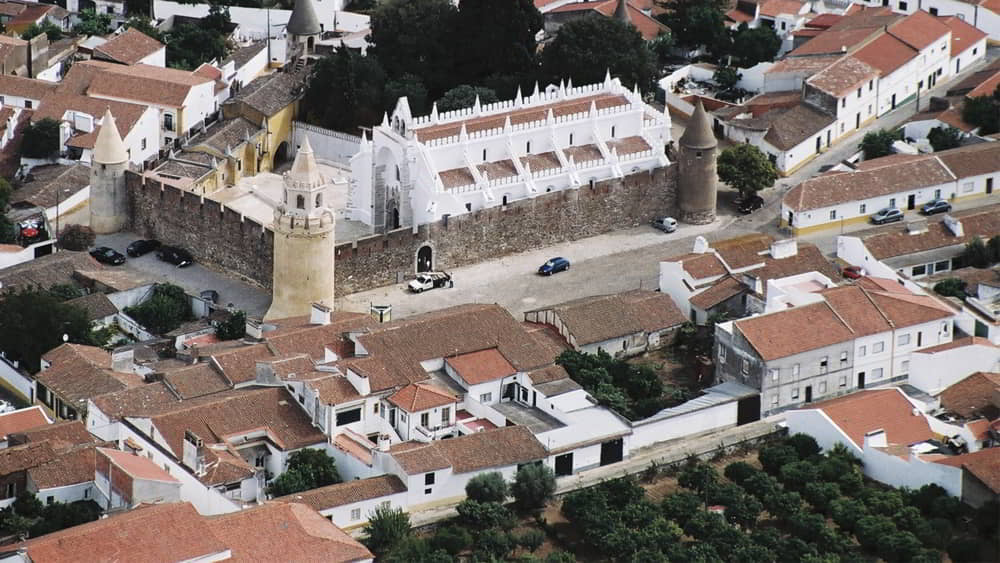Have you ever asked yourself if it was worth going to Viana do Alentejo? Well, you loudly say yes, with this article we are going to help you to know which are the best 8 places to visit in Viana do Alentejo Portugal. Viana do Alentejo, located in the Alentejo region, a traditional Alentejo village, is located in the mountain with the same name, Serra de Viana do Alentejo. The location of this place you will find in Google Maps. With little mountainous relief, the highest point in this municipality, and in this mountain range, is Pincarinho de São Vicente, with 374 meters of altitude.
The village is surrounded by beautiful landscapes, which gives it interest because the scenery is, in fact, of great beauty, with many amazing places, with a lot of beautiful things to do. The Alentejo plains, dotted with hills and cork oak forests, are true beauty. According to historical sources, its origins date back to the reign of D. Afonso III, when the first charter was granted, later renewed by D. Dinis. In the territory of Viana do Alentejo, prehistory left no significant traces of its material culture. However, many archaeological testimonies remain from the Roman occupation. For more travel articles about Portugal check this category and for all articles about Europe check this list. Let’s read together about places to visit in Viana do Alentejo Portugal.
1. Castle of Viana do Alentejo
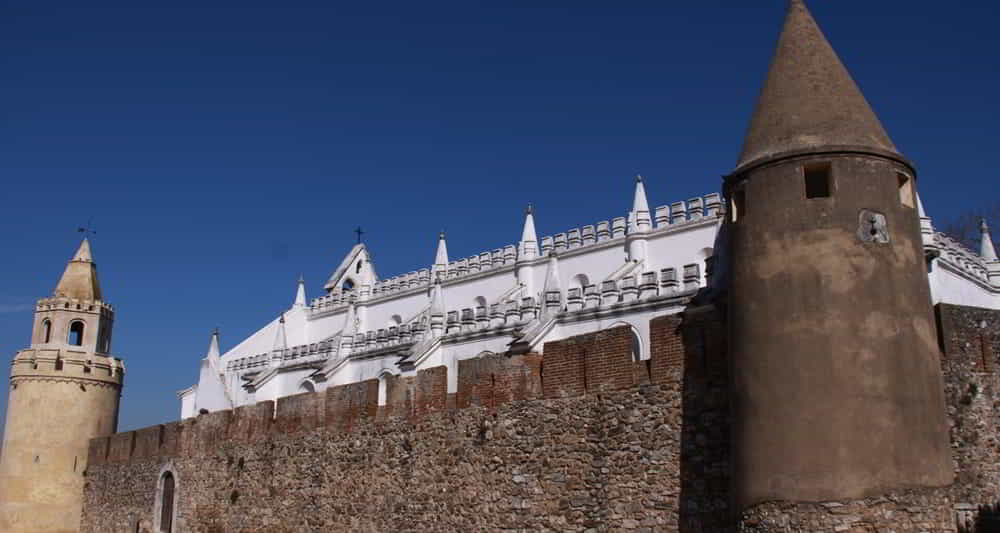
Viana do Alentejo is a typical southern Alentejo village – it preserves an interesting castle with Mudejar and Manueline influences. The castle walls were built on a pentagonal plan in 1313 (the time of Dom Dinis). The buildings inside were enlarged by Dom João II and Dom Manuel I – at the end of the 15th century.
To this last period belongs the sequence of elaborate battlements. When Dom Dinis began to reign, he was only 17 years old and during his reign, the farmers of the south planted thousands and thousands of olive groves – wheat production did not bring profit to the farmers, only to the lord.
2. Sanctuary of Our Lady of Aires
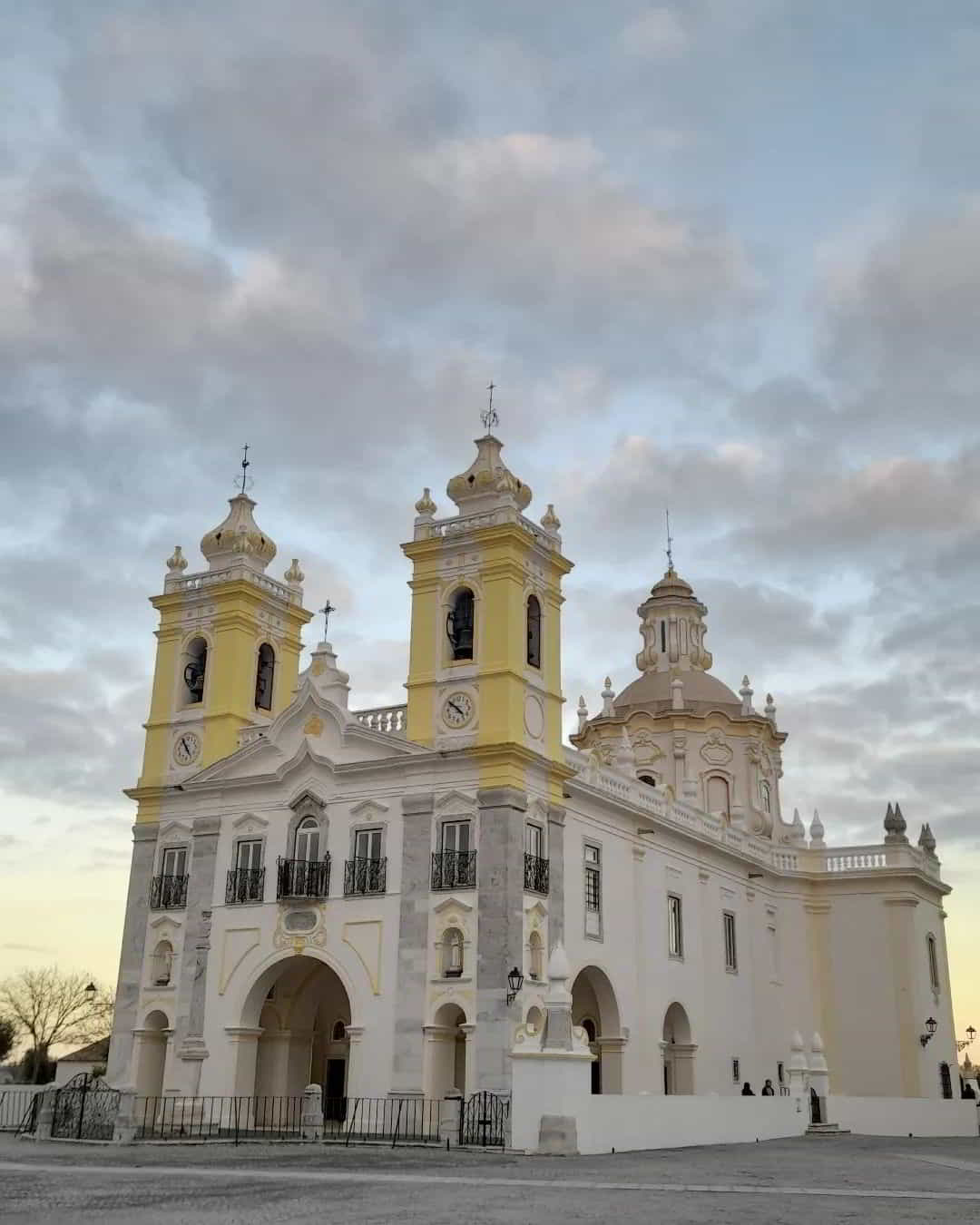
On the outskirts of the village, 10 minutes by car on the N384 or 257, discover the magnificent Sanctuary of Nossa Senhora D’Aires (18th century) by Father João Baptista. It is one of the great sanctuaries of Alentejo.
It is of an impressive scale for the current village, commissioned by the local confraternity of Nossa Senhora D’Aires, as a result of a promise. Also part of the sanctuary is the fountain of Nossa Senhora d’Aires, located in the Terreiro dos Peregrinos and houses of pilgrims. This is one of the most beautiful places to see in Viana do Alentejo Portugal.
3. Alcacovas Palace
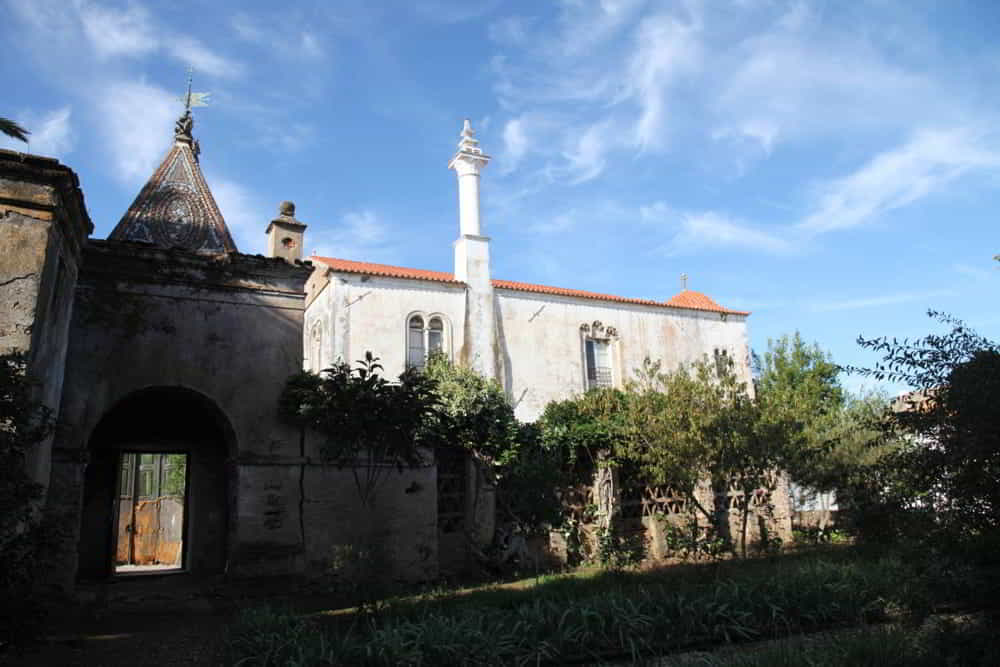
In the small village of Alcáçovas, 15 minutes to the southeast on the N257, you will find the small Paço Real das Alcáçovas, known as Paço dos Henriques and used as a center for cultural activities. Here several kings stayed overnight, namely Dom Dinis and Santa Isabel, and all the kings who followed him, like Dom Fernando, Dom João I, and Dom João II.
4. Mother Church of Our Lady of the Annunciation of Viana do Alentejo
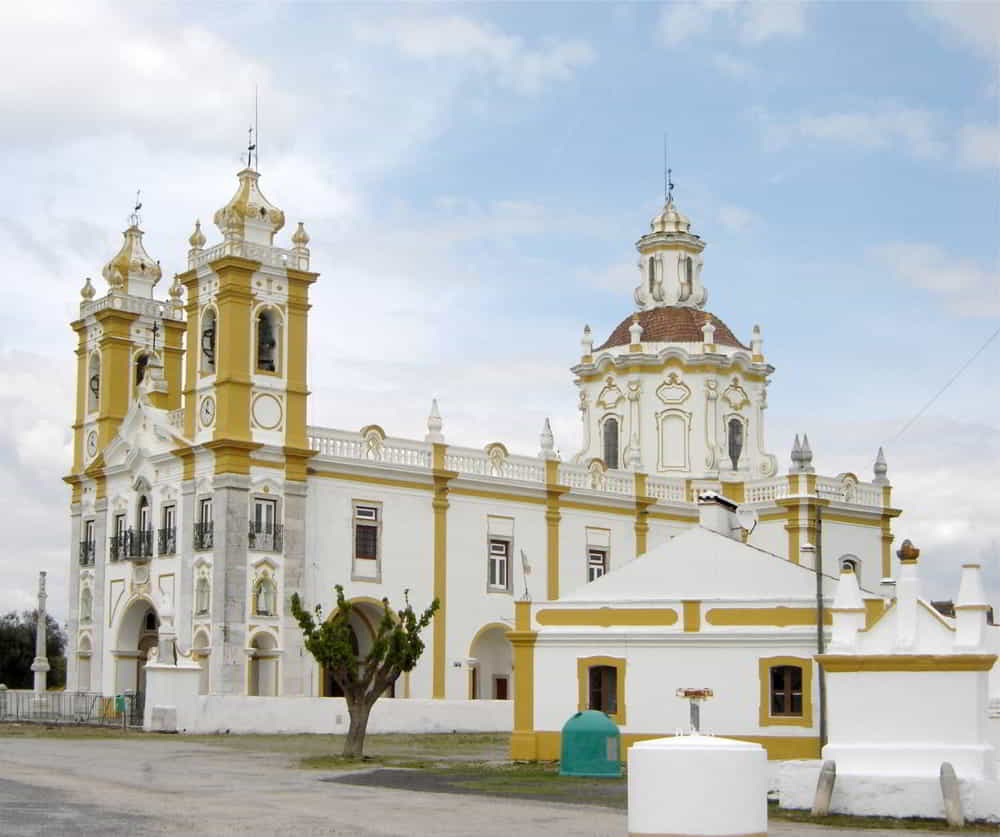
Due to the confluence of styles and architectural solutions presented, the Igreja Matriz de Nossa Senhora da Anunciação is considered by art historians as an almost perfect example of the so-called Late-Gothic Alentejo, an artistic aspect that merges in a single matrix the final aspect of the Gothic style, the geometry and proportion of the Italian Renaissance with Mudéjar ergonomics.
5. The Manufacture of Rattles
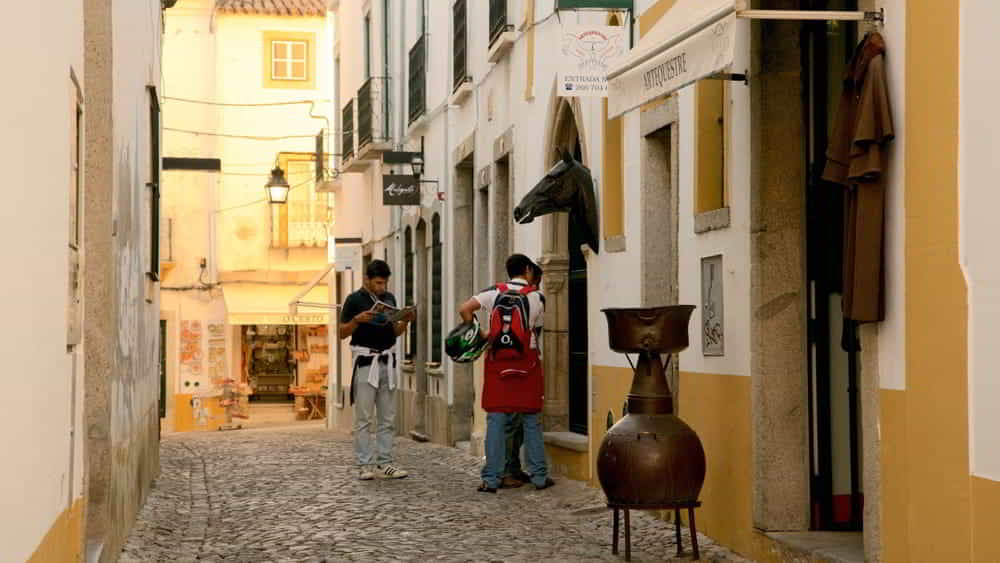
The Making of Rattles, considered an Intangible Cultural Heritage, is a unique art that has existed in the Alentejo region for over two thousand years. An important trade in the region’s identity, this art is still preserved especially in the municipalities of Estremoz, Reguengos de Monsaraz, and Viana do Alentejo, having been passed down from generation to generation. Visit the Museu do Chocalho, a private collection with more than 3,000 pieces collected over 60 years.
6. Church of Santo Amaro

The original construction of the Church of Santo Amaro dates from the end of the 17th century. V, period of occupation of the territory by the Visigoths, constituting an example of Paleo-Christian architecture in Portugal, the main reason for installing the Visigoth nucleus of the Regional Museum of Beja here. A valuable collection collected in the municipality by several archaeologists, among which the name of Abel Viana stands out, is presented in this nucleus.
7. Pisces Water Solar
Gothic, Manueline, Mannerist noble house, in which the ogival portals, as well as other occasional traces of the 15th-century campaigns, attest to the enduring of the late Gothic style. From the Mannerist stage is the veranda, with its doors with straight lintels, and the patio tank. It documents the transition from Gothic and Mudejar stylistic forms to Manueline in the context of southern civil architecture. This place is considered one of the best places to visit in Viana do Alentejo Portugal according to our list.
8. Chapel of Cruzeiro – Ermida do Senhor Jesus do Cruzeiro

The hermitage is located about 200 meters southeast of the sanctuary of Nossa Senhora de Aires. Even though devotion to Christ is very old, the great Christological surge in Portugal occurred in the 17th and 18th centuries, a time when popular devotion to the Crucifix increased the number of both small chapels and large shrines dedicated to Jesus located abroad. of the localities. Alongside this devotion, the Marian cult and the construction of sanctuaries that gave expression to it developed at the same time, as is the case of the current sanctuary of Nossa Senhora de Aires, which resulted from a replacement, made in the 18th century, of a Primitive building from the 16th century.

